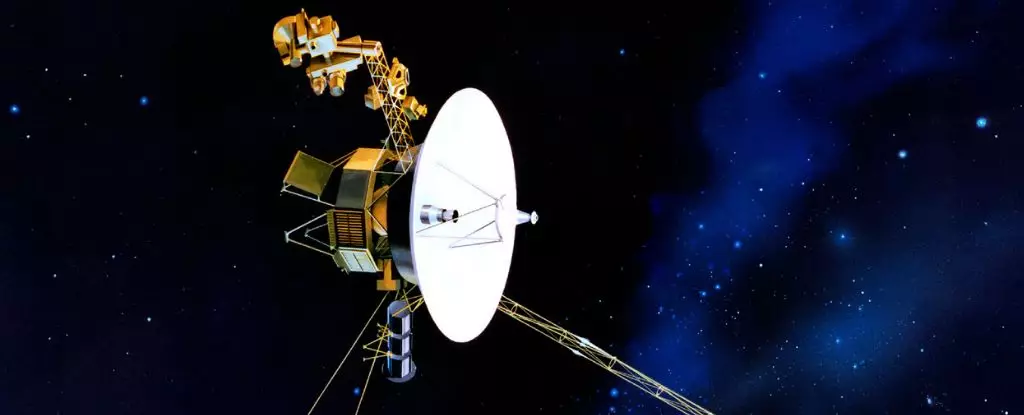Launched in 1977, the Voyager spacecraft embarked on an unprecedented journey through our solar system and beyond, marking a significant milestone in humanity’s quest for knowledge about the universe. Powered by plutonium radioisotope thermoelectric generators (RTGs), these probes have far surpassed their original mission parameters, continuously sending data back to Earth long after their intended operational lifetimes. However, as the years have progressed, the effects of time and distance have started to catch up with them, ultimately leading to difficult operational decisions.
NASA’s mission engineers have been diligently managing power resources for both Voyager 1 and Voyager 2. As the radioactive material in the RTGs decays, the power output diminishes, posing challenges to ongoing scientific experiments. Recently, it was announced that the plasma science instrument aboard Voyager 2 would be turned off to conserve power for the remaining functional instruments. This decision illustrates the ongoing struggle of maintaining scientific inquiry in the face of inevitable technological decline.
At a staggering distance of over 20.5 billion kilometers (approximately 12.8 billion miles) from Earth, Voyager 2 continues to provide a unique glimpse into the interstellar medium. However, the plasma instrument, which measures ionized particles from this fascinating region, has experienced limitations in its data collection. In recent years, its orientation in relation to plasma flow has rendered the instrument less useful, making the decision to power it down more palatable.
The four remaining instruments of Voyager 2, including a magnetometer and a cosmic ray system, are now tasked with continuing the exploration of the heliosphere and beyond. While these instruments provide vital information about the interstellar environment, the loss of the plasma science instrument marks the end of an era in direct observation of plasma interactions in space beyond our heliosphere.
Navigating Interstellar Space: Lessons from Voyager
Voyager 1 and Voyager 2 were developed with a unique trajectory that exploited a rare alignment of the outer planets, allowing them to visit gas giants like Jupiter and Saturn and ice giants Uranus and Neptune. Their discoveries have fundamentally changed our understanding of the solar system, but the realities of interstellar exploration come with constraints dictated by engineering and energy limitations.
Communication with the probes has become more challenging as they venture deeper into space. With signal travel times to Earth nearing two days, any operational issues become increasingly critical. NASA relies on the Deep Space Network to maintain contact and process the data received, which includes invaluable information about the boundary where the solar wind meets the interstellar medium.
Although NASA initially predicted operational capabilities until 2020, both Voyagers continue to operate with dwindling power resources. The RTGs, designed for long-term missions, lose about 4 watts annually—a reminder of the relentless march of time. The challenges facing the Voyager spacecraft highlight broader questions about long-term deep-space missions and the technology required to sustain them.
To prolong the life of Voyager 2 and its scientific output, mission engineers have implemented strategic adjustments to the spacecraft’s voltage monitoring and turned off non-critical systems to conserve power. These actions illustrate the ingenuity required in managing a decades-long mission with limited resources. Given that the plasma science instrument on Voyager 1 was powered down in 2007, the current decision reflects a broader trend in prioritizing functionality over redundancy as these spacecraft age.
While the shutdown of the plasma science instrument is a turning point for Voyager 2, it also calls attention to the unique treasures of data both probes have collected. Each passing year offers a diminishing opportunity for new findings stemming from these voyages. Still, the wealth of information gathered thus far provides an enduring legacy illuminating the complexities and wonders of the solar system and interstellar space.
The story of the Voyager spacecraft is one of exploration, discovery, and ultimately, the limitations inherent to technology. As Voyager 2 approaches its future operational restrictions in the 2030s, we are reminded that all scientific advancements are temporary. Despite the challenges ahead, the scientific foundation built by Voyager will continue to inspire generations to come, sparking the next wave of interstellar exploration.
The shutting down of scientific instruments isn’t merely an end; it’s a transition phase, marking a shift in focus toward what remains to be explored. The legacy of Voyager reminds us of the extraordinary risks and rewards involved in venturing into the unknown—a testament to human curiosity and determination that will undoubtedly echo in the halls of space exploration for years to come.


Leave a Reply